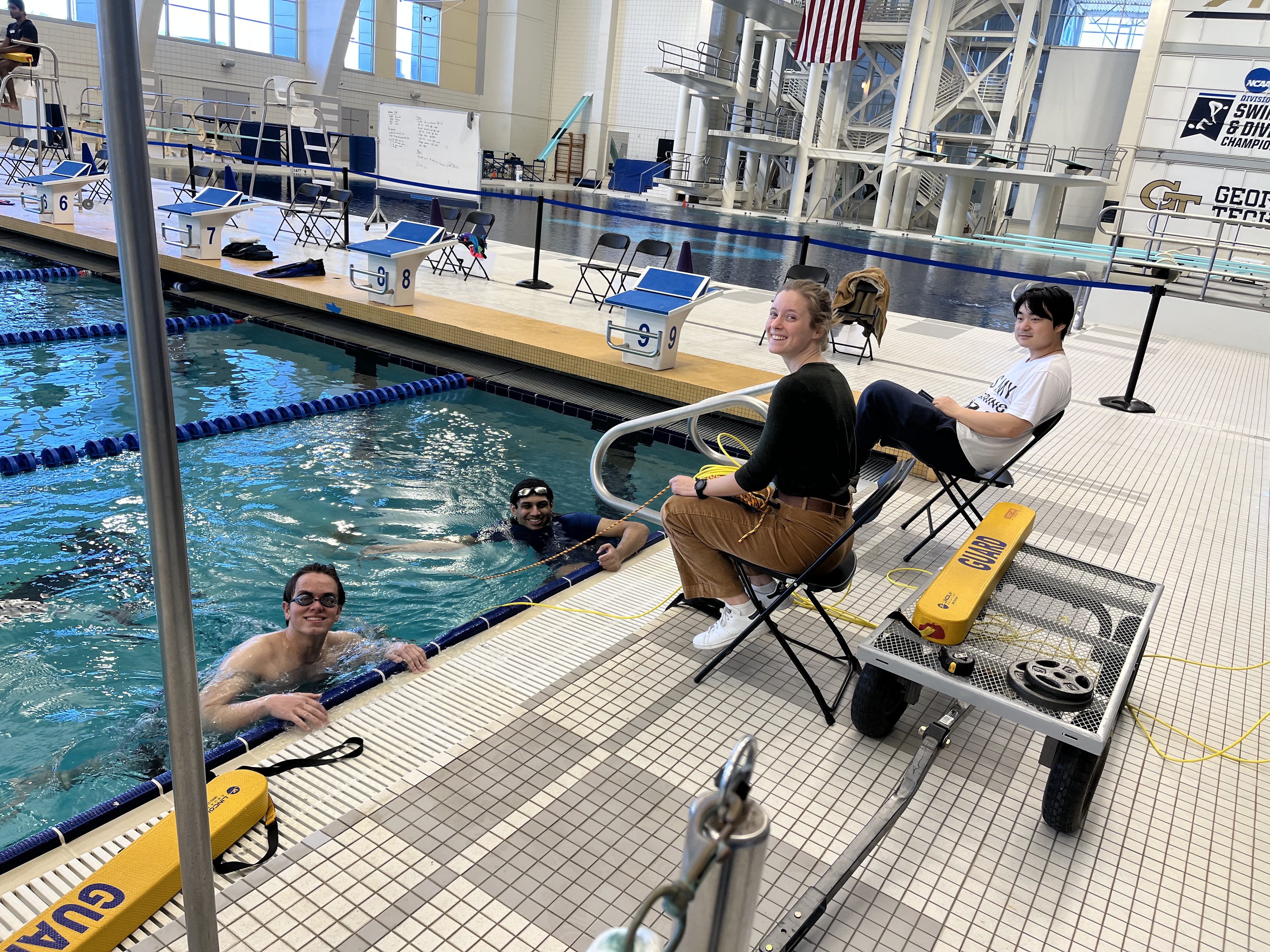RoboSub
The Competition

The RoboSub competition challenges students to build and program autonomous underwater vehicles. The underwater environment poses unique development challenges and inspires creative solutions.
The robot must complete a series of tasks autonomously, including obstacle avoidance, pinger detection, breaching, and more! We last participated in RoboSub in 2019, and we are looking forward to returning in 2025.
AUV 2025
A new vehicle, Take Two, will be making it's competition debut at RoboSub 2025 for MRG's first return since 2020. The platform focuses on simplicity and modularity, enabeling strong future development.
Take Two has a cast acrylic hull with eight polycarbonate guide rods around it, where we can mount different subsystems and sensors—like the powertrain and other electronics. Inside, and extendable drawer-style setup makes it easy to access and work on the electrical components, which include in-house-developed PCBs, fuses, buck converters, and more. We also put a lot of effort into making sure mechanical and software teams could work in parallel by using a medium-fidelity simulation in Gazebo.
Mechanical Design
X-Drive thruster configuration for maneuverability and sway
Cast acrylic hull with polycarbonate guide rails to efficiently mount subsystems and facilitate future development
Custom printed mounting solutions with attention to weight balance and bouyancy
In-progress development of autonomous torpedos with on-board visual processing and control
Electrical Design
Electrically isolated Computation and Thruster Power Systems
In-house developed motor control board and circuuit protection boards
Extendable interior drawer to facilitate access and maintenance
External battery housing for improved test-flow and modularity
Software Design
Code written in Python and C++ under the ROS 2 framework
Gazebo simulation environment used for rapid software development in parallel with physical development
IMU and WaterLinked DVL A50 used for localization
Stereo Camera and Sonar used for perception
2025 Team Roster
Shawn Coutinho
Sean Fish
Mitchell Turton
John Beeson
Zachary Greenberg
Agatta Betancourth Pollett
Erin Beazley
Matthew Woodward
Nicholas Lai
Aaron Wu
Social Media
Competitions
Operations
Get In Touch
© 2023 MRG